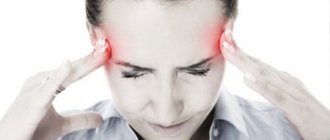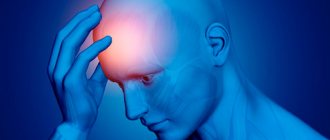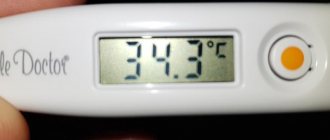Let's figure out how and what causes a headache, when you can just endure the pain, and when do headaches indicate that you have a migraine and it's time to treat it?
Headache
Currently, scientists have identified 150 types of diagnostic categories of headaches. However, there are the most common ones.
Symptoms of chronic daily pain occur in both adults and adolescents. An attack of mild or moderate pain occurs due to increased muscle tone in the head and neck area and has a long-term course. Most often, sudden headaches are caused by an infection, a cold, or associated with an increase in temperature. Other diseases that provoke a sudden headache are sinusitis (inflammation of the paranasal sinuses), pharyngitis (inflammation of the mucous membrane of the larynx) or otitis (inflammation of the middle ear). Headache is rarely a symptom of a more serious illness.
Headaches can also be caused by head trauma, stress, alcohol abuse, irregular diet, sleep disturbances, and general fatigue. Attacks can be triggered by environmental factors, passive smoking, strong odors of household chemicals or perfumes, allergens or junk food. Noise, light, fatigue, change of weather are also among the triggers of headaches.
To get rid of this type of headache, you should not take painkillers. It is better to understand the root cause of pain and lead a healthier lifestyle. In this case, the headache will hurt for some time, but if you sleep more, change your diet or go on vacation, headache pain will bother you less and less and, as a result, will go away completely.
Migraine
The exact cause of migraine is not known, although it is associated with narrowing of the arteries of the brain and its changes, or with congenital disorders in certain areas of the brain. In fact, migraine is a type of headache. But at the same time, migraine is a disease that never goes away. The duration of the attack varies from 4 hours to 3 days and usually occurs 1 or 4 times a month.
The concept of “migraine” is defined by attacks of intense headache of a pulsating nature. The pain recurs periodically and is localized mainly in one half of the head, mainly in the orbital-frontotemporal region. Migraines are often accompanied by nausea, vomiting, poor tolerance to bright light, loud sounds, drowsiness, and lethargy after an attack.
Migraine usually occurs between the ages of 18-33 and affects 15-25% of women and 4-8% of men. This disease affects a person regardless of his place of residence and financial well-being. For example, among those suffering from migraines are the world famous model Elle Macpherson, actress Elizabeth Taylor and actor Ben Affleck.
Statistics show that every second woman and every third man miss at least six working days a year due to headaches. At the same time, migraines in women are longer and more intense, and perhaps that is why women tend to consult a doctor about this.
Migraines do not pose a significant threat to health or life, but for many patients, migraines are so severe that they begin to wonder if they have some serious neurological disease.
Why does my head hurt?
Any discomfort that occurs in the body indicates the occurrence of pathological processes, and headaches are no exception. There are many reasons why discomfort occurs. Among the most common:
- violation of the tone of blood vessels supplying the brain;
- poisoning;
- infections;
- fever;
- traumatic brain injury (TBI);
- diseases of the spine.
A headache attack can be triggered by a disturbance in sleep patterns, a change in climate zone, or prolonged physical or intellectual overload. Even a single case of headache indicates some kind of disorder in the body, but if attacks occur regularly, it is recommended to make an appointment with a neurologist.
Headaches can be concomitant symptoms of other diseases: meningitis, sinusitis, sinusitis. If discomfort persists for a long time or is constantly repeated, the patient may have cardiovascular pathologies, kidney disease, or parasitic infestations. Sharp pain in the orbital area can be caused by glaucoma and eye abnormalities.
Only a specialist can determine the exact cause of headaches after examination and additional tests.
What types of headaches are there?
In neurology, the “International Classification of Headache Disorders” approved by WHO is used. According to the current classifier, there are 13 main groups of headaches, some of which are characterized as primary (that is, being an independent pathology), and some as secondary (occurring against the background of other diseases).
The cause of the primary headache can be:
- vascular in nature - caused by cerebral vascular dystonia and can be different: pulsating, aching, causing a feeling of squeezing and heaviness. Symptoms depend on the characteristics of the pathology: for example, if the venous outflow is impaired, the patient complains of a feeling of fullness, which intensifies when lying down;
- vertebrogenic – caused by spinal pathology, for example, cervical osteochondrosis. In this case, the curvature of the spinal column disrupts the normal nutrition of the brain, which becomes the cause of acute or aching pain;
- Tension headache is the most common type, which is described by patients as a feeling of pressure, a “hoop” or “helmet”. It can occur occasionally or regularly - in this case, neurologists talk about chronic pathology. Develops against the background of autonomic dysfunctions and constant stress;
- migraine - paroxysmal severe pain that appears on one side of the head. Often accompanied by sensitivity to light and smells, nausea, and vomiting. Usually occurs in young people under 35 years of age;
- trigeminal autonomic cephalgia, which includes, for example, cluster pain. It is characterized by sharp painful attacks that occur on one side of the head, alternating with periods of remission. As a rule, the attack is quite short and lasts a few seconds;
- cough - occurs against the background of coughing, sneezing or other physical stress associated with straining. It has a sharp cutting nature, lasts from several minutes to half an hour;
- developing after physical activity - appears exclusively after various exercises, training, running or heavy physical work
A separate classification exists for secondary headaches. According to it, pathology can develop against the background of infections (for example, meningitis), after traumatic brain injuries and neck injuries, with ENT diseases, mental disorders, and depression. A separate category includes headaches that appear from uncontrolled use of painkillers.
For effective treatment, it is necessary to establish the type and cause of the headache. This can be done during an examination by a qualified neurologist.
Symptoms of a real migraine - how to understand that you have a migraine?
Unfortunately, this disease has not been fully studied. It affects about 11 percent of the population. The main symptom is an aura that precedes an attack - a disturbance in perception for 10-30 minutes:
- Flies, a veil, flashes before the eyes.
- Impaired sense of balance.
- Loss of control over your muscles.
- Hearing/speech impairment.
This happens due to a sharp narrowing of the main arteries of the brain and a subsequent lack of blood flow to it.
How is a migraine different from a headache?
Migraine is often called any headache, but this is a misconception. In fact, migraine is one of the types of headaches that has a number of distinctive features:
- pain is localized in one half of the head;
- has a sharp, often pulsating character;
- pain syndrome is accompanied by increased sensitivity to smells and light, as well as nausea, often vomiting;
- an attack rarely lasts longer than a day.
Often before a migraine, patients experience characteristic signs of developing pain: for example, short-term blurred vision, tingling in the fingertips. The disease is more often diagnosed in young people aged 18 to 35 years, women are more susceptible to migraines than men.
Despite the prevalence of migraine, neurologists have not fully established the cause of its occurrence. The main factors associated with the development of migraines:
- heredity;
- vascular pathologies of the brain;
- congenital abnormalities of brain tissue.
An attack can be triggered by stress, an unbalanced diet, lack of proper rest, or sudden intense physical activity. Migraine is one of the most severe headaches, temporarily depriving a person of his ability to work. To stop it, it is necessary to choose the right medications, as well as adhere to preventive measures developed by the observing neurologist.
2. Reasons for the development of the disease
The risk of migraines is also associated with certain causes that cannot be avoided or eliminated:
- Female. 75% of all patients with migraines are women. These data suggest the influence of a hormonal factor on the occurrence of headaches;
- Age. The vast majority of migraines occur in people between the ages of 15 and 55. This can also be associated with hormonal status, which in other age groups has a lower and more stable background;
- Heredity. In most cases, migraines occurring in children are due to genetic predisposition. Probably, hormonal fluctuations are not of decisive importance here, and the triggering mechanism for migraine is based on other factors that are inherited.
Visit our Neurology page
Why is it dangerous and does it need to be treated?
Even if you are faced with a single attack of mild headache, this indicates the presence of hidden disorders that can develop in the future and lead to various pathologies: for example, vascular disorders. But there are markers indicating that you should contact a neurologist immediately:
- the pain is sudden, intense, and difficult to bear;
- pain appeared after physical labor or sports training;
- you recently had a head injury (severe bruise, blow from a fall);
- headache increases with changes in body position;
- painful sensations are accompanied by other symptoms: blurred vision, numbness of the limbs, goosebumps, nausea, unfocused attention, fever.
An attack can be caused by a stroke, acute poisoning, oxygen starvation of brain cells, or infections. Therefore, it is necessary to make an appointment with a neurologist as soon as possible. The specialist will conduct an initial examination and prescribe additional examinations:
- Doppler ultrasound – ultrasound examination of the vessels of the neck and head. Allows the doctor to determine the volume of blood flow, detect fluid stagnation, assess the elasticity of the vascular walls, and so on. Vascular problems are one of the most common causes of frequent pain and dizziness;
- SCT (spiral computed tomography) is a non-invasive examination that allows you to assess the condition of the brain tissue and meninges, detect deviations from the norm, structural abnormalities, foci of inflammation, tumors, bleeding;
- MRI of the brain. Another non-invasive study, painless and safe for the patient. In the images, the neurologist can see pathologies, injuries, paroxysmal conditions, abnormal vasodilation and other abnormalities.
If the infectious nature of the disease is suspected, general tests may be prescribed: for example, urine and blood tests.
You should also consult a neurologist if you periodically suffer from headache attacks. The doctor will determine the causes of pain and select effective therapy to eliminate it.
How to stop a migraine attack - basic recommendations
- At the first signs of migraine, aspirin or paracetamol is usually prescribed .
- Until the attack stops, you should be in silence, in a horizontal position and in a ventilated, dark room .
- It is recommended to apply cold to the neck and forehead.
- If the nausea and pain are unbearable, you can induce vomiting. This may help stop the attack.
- Tea/coffee during an attack is prohibited.
Prevention plays the main role in the fight against this disease. As you know, stopping an attack with pills at the peak of pain has no effect. Therefore, the best option is to prevent attacks.
Which doctor should I consult for treatment of migraines and headaches?
If you have episodic or regular headaches, you should consult a neurologist. In order for the doctor to quickly determine the nature of the pathology and establish its cause, be prepared to answer a number of questions:
- in which area of the head the discomfort is localized: in the forehead, in the temples, on the back of the head;
- what is the nature of the pain: pulsating, dull, sharp, migrating, etc.;
- how long ago it appeared and how often it repeats;
- is it accompanied by additional symptoms: sensitivity to light, smells, nausea;
- whether other family members suffer from headaches;
- Do you have a history of birth, traumatic brain injury, neuralgia, or previous neurological infections?
Patients may be advised to keep a special diary in which to record recurring episodes, their triggering factors, duration, and course characteristics. The neurologist may also ask about the daily routine, the nature of work, and lifestyle. After examination and receiving test results, the doctor will accurately determine the type and cause of pain and select the appropriate medicine.
The treatment is complex and is aimed both at relieving attacks of pain (with the help of various analgesics) and at eliminating the root cause of its occurrence. Much attention is paid to lifestyle correction.
Signs of a classic migraine - identify a migraine in a minute!
Throbbing pain lasting from an hour to several days.- Gradual increase in pain affecting one side of the head.
- Possible localization of pain: area of the eye, ear or forehead, temple, neck, jaw or shoulder.
- Severe discomfort can affect the entire body.
- The pain is accompanied by vomiting, chills and dizziness, cooling hands/feet, frequent urge to urinate, and sudden numbness of the skin on the face.
- As the attack subsides, a feeling of absolute exhaustion is noted.
Is it possible to get rid of headaches using traditional medicine?
Many patients faced with recurrent headaches are in no hurry to consult a neurologist and try to recover with the help of traditional medicine. However, this approach does not lead to a positive result: any self-medication is dangerous. This is due to a number of reasons:
- uncontrolled use of painkillers (even of herbal origin) can lead to serious side effects: disruption of the liver and kidneys, allergic reactions, problems with the gastrointestinal tract. This will not only not relieve neurological disorders, but will also lead to the development of new pathologies;
- The cause of the headache can only be determined after a series of medical examinations. Without this, any therapy comes down to masking the symptoms, while the pathology causing the headache continues to develop.
Therefore, you should not postpone your visit to the doctor and rely on traditional medicine. But patients can actually take some actions that will reduce the frequency of relapses and relieve headache attacks. This is about
What are the benefits of a healthy lifestyle? developing healthy lifestyle habits:
- regular physical activity. One of the common causes of headaches is physical inactivity, as a result of which the tone of muscles and blood vessels decreases, the blood supply to the brain tissue deteriorates, and degenerative processes begin. Sports and exercise help strengthen the body and reduce the risk of chronic headaches;
- balanced and varied diet. It is recommended to exclude fast food, fatty, smoked and salty foods from the diet, eat more vegetables and fruits, replace white bread with rye bread or baked goods with bran. A properly selected diet is a good prevention of vitamin deficiencies; it also prevents excess fluid from accumulating in the body, which can increase intracranial pressure and lead to migraines;
- full 8-hour sleep. During sleep, the body recovers and “gets rid” of psycho-emotional stress. Regular lack of sleep undermines a person’s immunity, increases stress levels, and leads to cerebral vascular spasms;
- correct drinking regime. Necessary for maintaining a healthy water-salt balance in the body. Doctors usually recommend drinking up to 2 liters of clean drinking water per day (not counting liquid obtained with other products). During hard physical work, intense physical activity, and in hot weather, the amount of water consumed should be increased;
- regular walks in the fresh air (from 1 hour a day). While walking in parks and forested areas, the body receives the missing physical activity, the blood is saturated with oxygen. This is also important for preventing headaches.
Is it possible to get rid of headaches and migraines? It is expensive?
If you consult a neurologist in a timely manner, you can completely get rid of headaches. The doctor will select drug therapy and develop preventive recommendations to prevent relapse.
To fully recover, you will need:
- follow medical instructions;
- normalize work and rest schedules;
- get rid of the causes of headaches (concomitant diseases);
- lead an active and healthy lifestyle.
Your health is in your hands! There is no need to think that recovery is expensive. Much of your success depends on how willing you are to change your life for the better and follow your doctor's orders.










